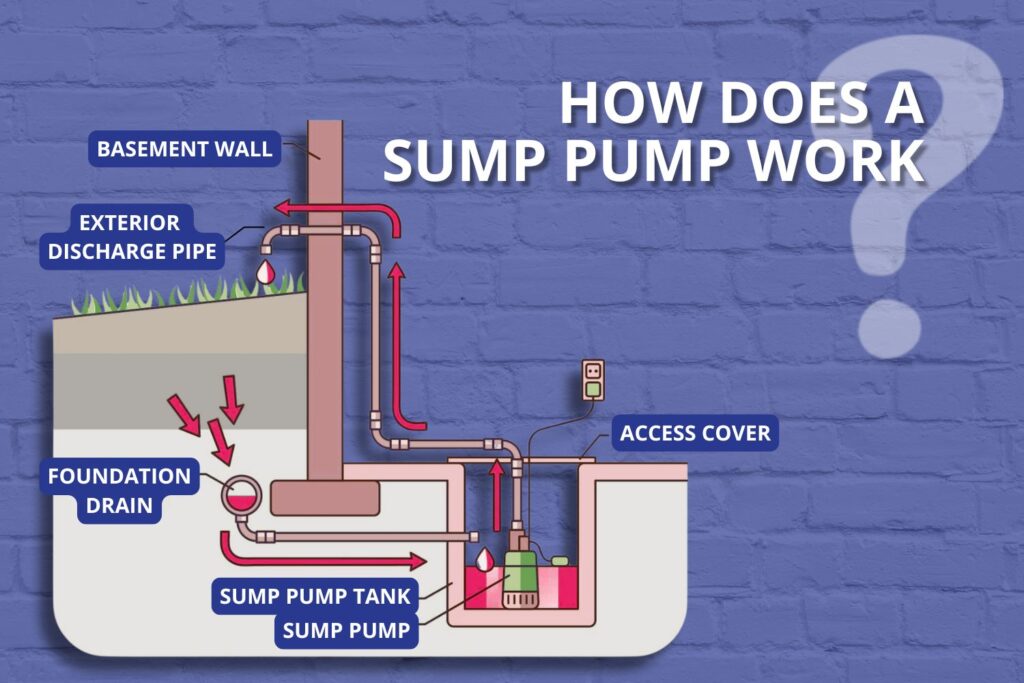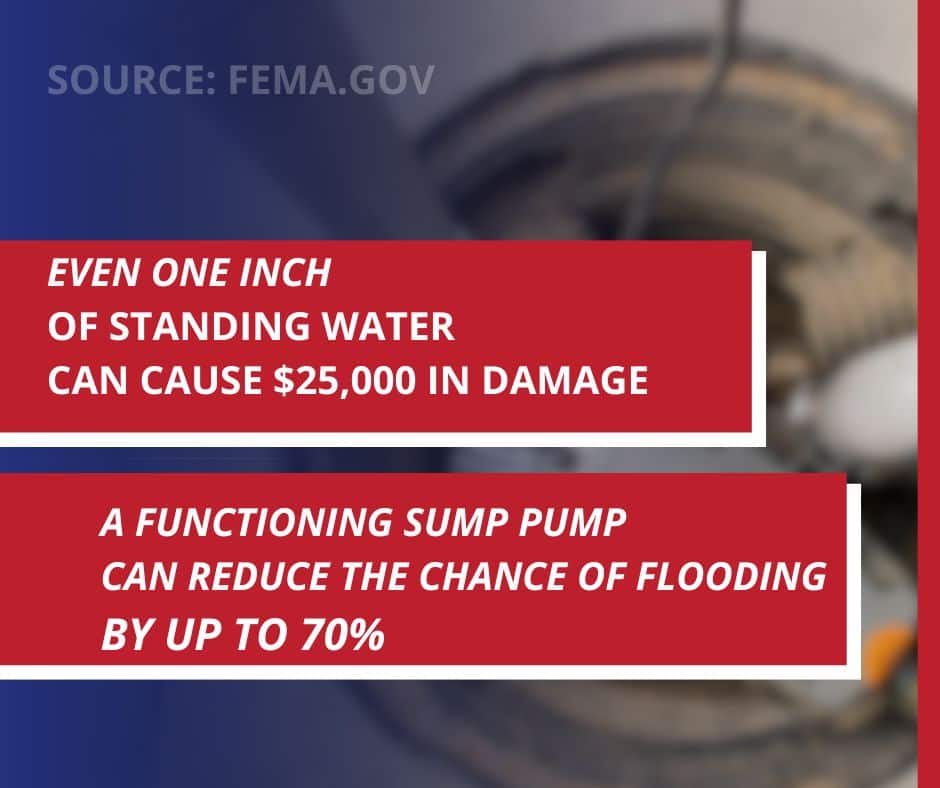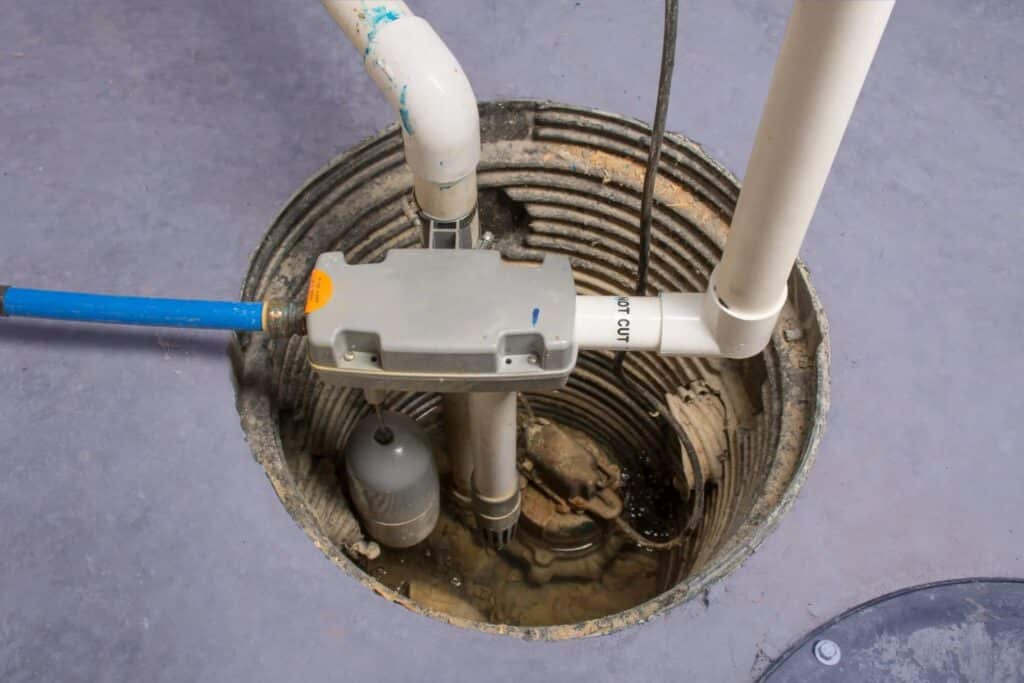A sump pump is one of the most important defenses your home has against water damage, but how does it work? Tucked away in a basement or crawl space, this small but powerful device can prevent thousands of dollars in repairs. According to FEMA, even one inch of standing water can cause around $25,000 in damage to a home’s structure and belongings.
Despite its importance, many homeowners are unsure how a sump pump works or how to keep it in good shape. Some even forget they have one until it stops working.
Let’s make sure you and your system are ready for whatever comes your way.
What a Sump Pump Does
A sump pump removes excess water from the lowest level of your home. Water naturally flows into a pit, or sump basin, from perimeter drains or through the soil. When water levels rise too high, the pump activates and pushes it away from the foundation.
Without this system, water can seep into walls, damage floors, and create conditions for mold. Mold can begin to grow within 24 to 48 hours of water exposure. It not only damages building materials but can also cause respiratory problems, especially for children, older adults, and people with asthma or allergies.
A functioning sump pump is like your home’s personal guardian, kicking in automatically when needed.

How a Sump Pump Works
Step 1: Water Collection
The sump pit is installed at the lowest point in your basement or crawl space. Water enters the pit through drains or natural groundwater flow. In heavy rains, you may see the pit fill quickly.
Step 2: Activation
A float switch or pressure sensor detects when water reaches a set level and turns the pump on automatically. The float switch is similar to the mechanism in a toilet tank, while a pressure sensor detects water through force changes.
Step 3: Pumping
The pump’s impeller pushes water up through a discharge pipe. This pipe routes water to a safe location outside, away from the foundation. The discharge point should be far enough from your home to prevent water from flowing back toward the foundation.
Step 4: Shutoff
Once the water level drops, the switch or sensor signals the pump to turn off until needed again. This cycle may repeat several times during a heavy storm.
Types of Sump Pumps
| Type | Location of Motor | Pros | Cons | Best For |
| Submersible | Quieter operation, Space-saving, Higher pumping capacity | – Quieter operation, – Space-saving – Higher pumping capacity | – Higher replacement cost – More complex installation | Homes needing high capacity with limited space |
| Pedestal | Above the sump pit, connected by a shaft | – Easier to service – Lower replacement cost – Longer motor life | – Louder operation – Takes up more space around the pit | Homes with large basements or where easy access is preferred |
Both types are effective when sized and installed correctly. Submersible models are ideal for homeowners who want a quieter, more discreet system, while pedestal sump pump models work well if you prefer easier access for servicing or have a tighter budget.
Key Terms to Know
- Sump pit: The basin that collects water until the pump activates
- Float switch or sensor: The mechanism that starts and stops the pump
- Impeller: Moves water into the discharge pipe
- Check valve: Keeps pumped water from flowing back into the pit
- Discharge pipe: Routes water outside to a safe drainage area
- Power source: Supplies electricity; a backup power source is recommended
Knowing what each part does helps you identify issues faster if the pump malfunctions.
Why Sump Pumps Matter
Water damage is one of the most frequent and costly homeowner issues. The Insurance Information Institute reports that the average non-weather-related water damage claim exceeds $10,000.
Beyond financial loss, prolonged moisture can…
- Attract pests like termites and rodents
- Cause wood framing to warp or rot
- Lead to foundation cracks from water pressure
- Create unhealthy indoor air quality from mold and mildew
A sump pump offers support during storms, rapid snowmelt, or plumbing leaks by acting before water levels get high enough to cause harm.

Maintenance Basics
- Test the Pump Monthly: Pour a bucket of water into the pit until the float rises. The pump should start, clear the water, and shut off without delay. If it does not, check for blockages or a faulty switch.
- Clean the Pit Twice a Year: Remove debris, dirt, or gravel that could clog the pump or block the float switch. This step is especially important if you have pets, as pet hair can also get into the pit.
- Check the Discharge Line: Ensure the pipe is free of blockages and that the end is positioned to drain water away from the house. During winter, confirm the line is not frozen.
- Inspect the Check Valve: Confirm the valve is functioning to prevent backflow into the pit. If water returns after the pump shuts off, the valve may need replacement.
- Consider a Backup Power Source: Since most pumps run on electricity, a battery backup or water-powered pump can keep your system running during an outage. According to the U.S. Energy Information Administration, the average U.S. home experiences about 1.3 power outages per year, often during severe weather when sump pumps are most needed.
Common Problems and How to Spot Them
- Frequent Cycling: If your pump turns on and off often, the pit may be too small, the switch may be faulty, or the discharge line may be blocked.
- No Activation: If the pump does not start when the water rises, check the power connection, float switch, and circuit breaker.
- Slow Pumping: A clogged impeller or blocked discharge pipe can reduce performance. Sometimes mineral buildup is the culprit.
- Unusual Noises: Grinding, rattling, or humming could indicate a mechanical issue that requires service. Ignoring these noises can lead to complete pump failure.
Other Related Questions
How long does a sump pump last?
On average, 7–10 years with regular maintenance. Pumps in high-use areas may need replacing sooner.
Do all homes need a sump pump?
Not necessarily. Homes on high ground with good drainage may not need one, but many areas in the U.S. have soil or climate conditions that make them beneficial.
Can I install a sump pump myself?
While possible, correct sizing, pit placement, and discharge routing are key to performance. Improper installation can lead to flooding or premature pump failure.
When to Call a Professional
It is a good idea to bring in a licensed home inspector any time you are buying or selling a home and need the sump pump evaluated as part of a full inspection.
An inspection is also wise if your current pump is older and you want an objective opinion before deciding whether to replace it. If you have noticed water in your basement or crawl space, a professional can determine whether the sump pump is functioning properly or if another drainage issue is to blame. Frequent cycling or a pump that appears too small for the amount of water in your lowest level are also signs that an inspection is needed.
Even if the system seems to work, an inspector can help you decide whether a backup sump pump or alternative setup would add extra protection for your property.
Conclusion
A sump pump is a small investment compared to the cost and work involved in water damage repair. Knowing how it works, keeping up with maintenance, and calling a professional when needed can protect your home from costly damage.
If you are unsure about your pump’s condition or whether it’s sized correctly for your home, schedule an inspection with a trusted professional. The sooner you confirm your system is ready, the better your chances of avoiding basement flooding the next time a storm rolls in.


